This year a car celebrates 130 years of existence. At least that is a general belief. A venerable age and a remarkable technical development of the machine for general use of mankind testifies to the inventiveness and pioneering spirit. An innovator Karl Benz and his rich wife Bertha 130 years ago began the story that is still going on. Happy birthday, CAR.
However, the car may be older. Depending on how we look at it. While the cars were mostly run by petrol or diesel, which was practically the whole of the previous century, it was self-evident that the first car is the one which was powered by a petrol engine. And the present Daimler, a kind of successor to what was done by Karl Benz, still proudly advertises this opinion. The first car was “their” Benz Patent-Motorwagen from the year 1886. Karl Benz skillfully assembled by then known knowledge, upgraded and improved it and finally made a patent.
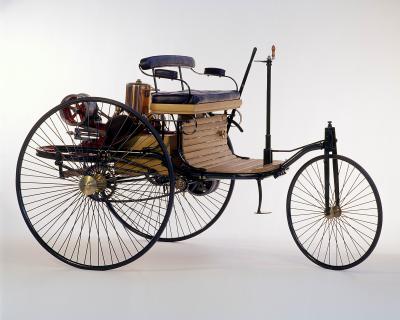
Benz Patent Motor Car, 1886 – the world’s first automobile?
The cost of today’s 24 thousand euros contributed his rich wife Bertha. In the next seven years he made about 25 copies, which was considered as series production in the late 19th century.
Will the Patent-Motorwagen remain the first car in the world? Was the world’s first car electric?
But we must remember that those were the times of carriages and smitheries. The technique, as we know today, was still in its infancy. And until the early years of the next century it was not quite clear what will prevail as a drive for carriages without horses – petrol or electricity. Later it turned that the black gold prevailed as the main derivate for running car engines, even though we had a few electro-cars short appearances in between.
But as things are developing today, it looks like the electricity will gradually prevail. Then it will be necessary to rethink to whom the title of the first car ever made belongs.
Almost 60 years before Benz, in 1828, it was a Hungarian inventor Anyós Jedlik who made a small (model) car and equipped it with a useful electric motor. Later, much more similar experiments occurred. Even the father of Porsche connected the wheels with the electric drive.
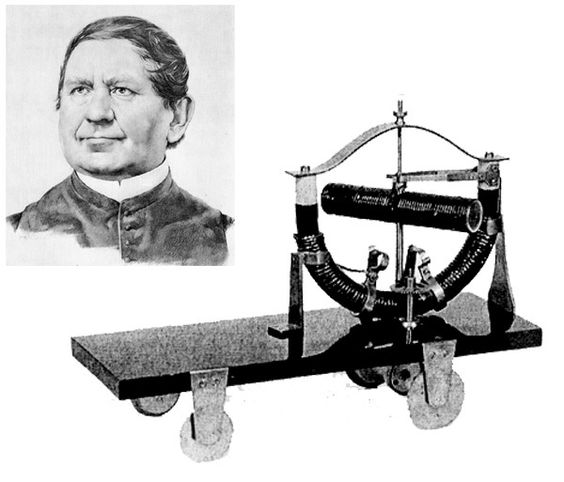
First electric model car, made in 1828 by Hungarian inventor Anyos Jedlik
With all this petrol / electric story we must not neglect steam and hydrogen power, which occurred even earlier. In short, those were the beautiful times of technical romance.
From handmade cars to assembly line in three decades
Anyway, the car was born and quickly started to substitute horses. Shoveling horse fig off the road, has gone into oblivion. The stables, where they changed horses on carriages on longer routes, begin to lose more and more business.
The reason was clear and simple. Actually, there were two. People wanted to be independent from the animals as far as transportation is concerned. On the other hand, more and more people were poisoned by the new product, technicians and engineers found a wonderful training ground for new discoveries.
In the early years of the 20th century the production of vehicles quickly moved to a real serial production. The car quickly approached closer to the broad audience, almost as fast as the mobile phone at the end of the same century.
Ford T: the car became accessible to (almost) everyone
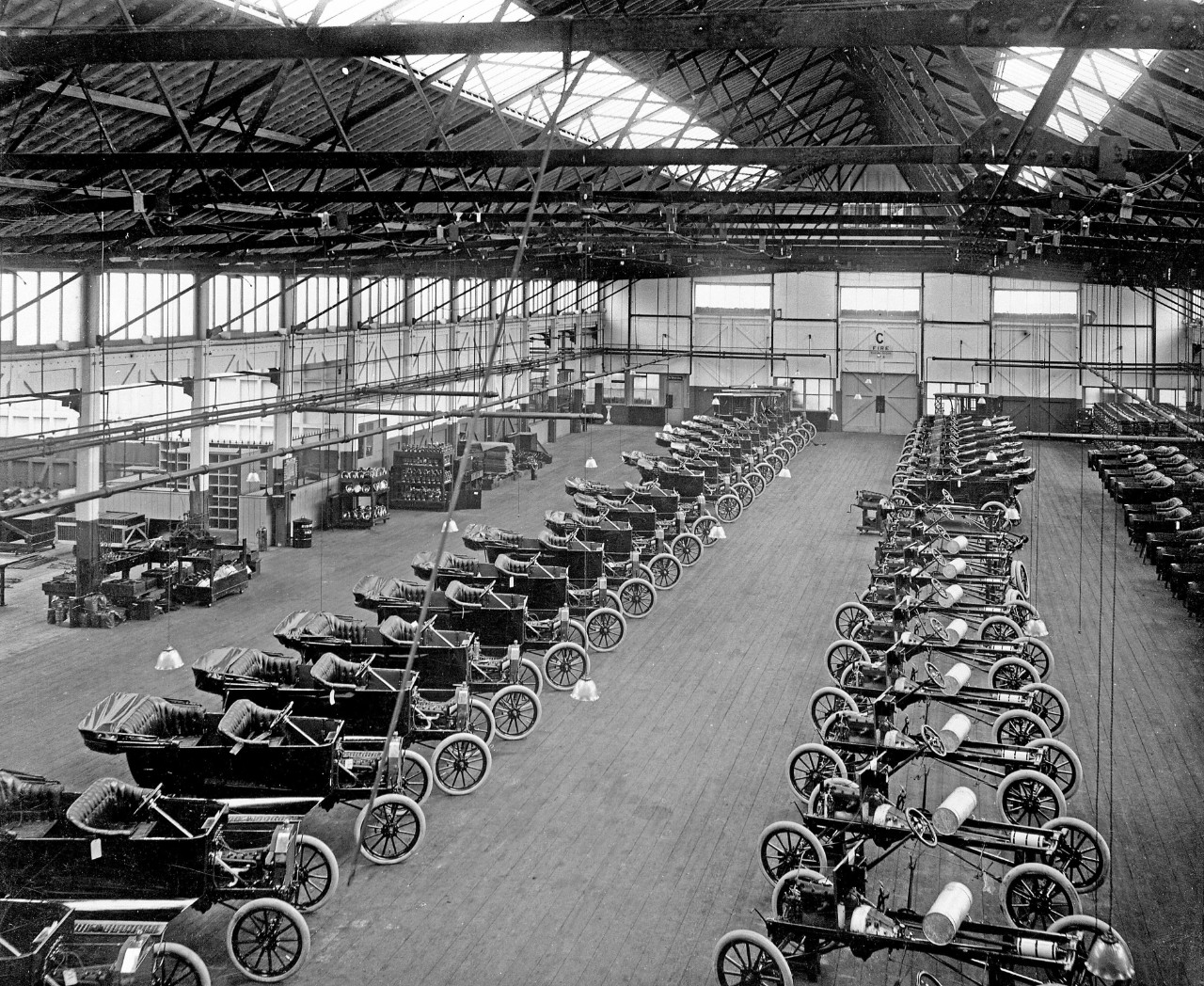
Ford model T assembly at Trafford Park (UK)
With Ford model T in 1908 started the current period of the car as consumer goods. It was the first useful mass consumption product which was so expensive that for most people it became one of the largest purchases in their life, immediately after the solution of the housing problem. And, of course, the chance was born for businessmen. They quickly became more important (and wealthier) than developers. They learned about the art of supply and demand, and at the same time predicted trends.
The typical car buyer profile changed significantly in 130 years
We can say that the car is moving around the centenary of its consumer role. During this time the customer structure is constantly changing. The very first customers (and before that the inventors themselves) were more or less technically educated. In the machine which drives itself, many things had to be done. The reliability of the early machines was far from good at that point of auto evolution.
Those early pioneers were followed by rich (and with years less and less rich because of the lower price of the car) driving enthusiast, who were still able to take a screwdriver or hammer in their hands if needed. But they were also similarly thrilled racing on muddy tracks at first, later on the dusty roads and shortly after on the hard-surfaced roads.
Cars eventually got more powerful engines, the additional equipment increased and the shape became more beautiful. Clearly, the car had to be closer to the average person. It had to be useful and easy to drive.
Wonderful 60s and 70s – a car accompanied by romantic shape and enjoyment
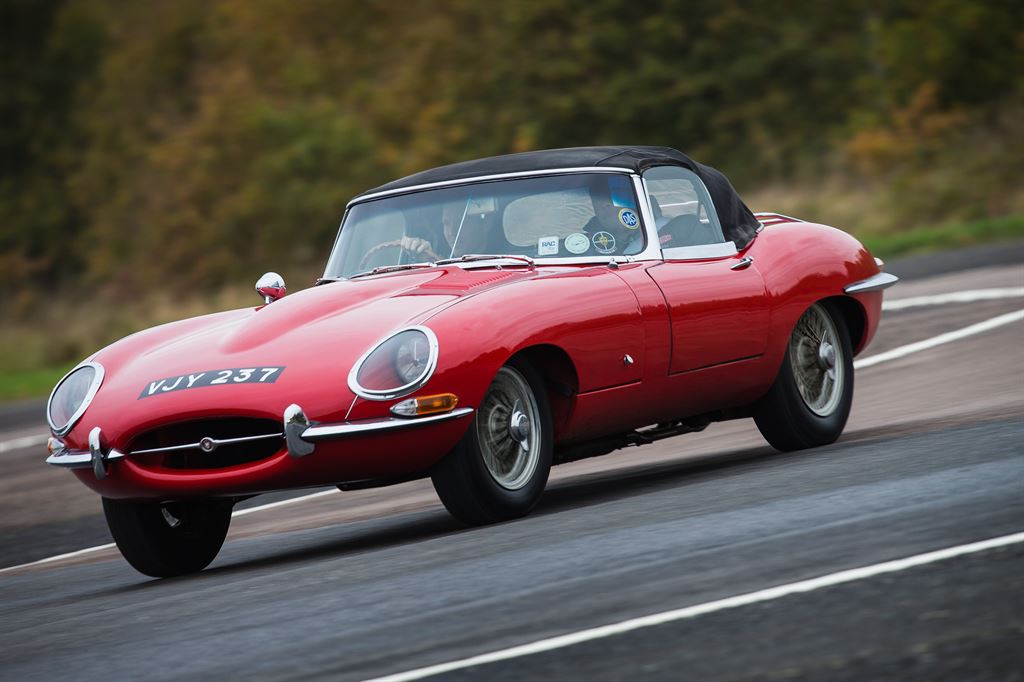
Jaguar E-type – immortal shape
And at that time different cars were born, some of them wonderful from a technical perspective, the design viewpoint, or from both. Mini Morris, Citroën DS, Lamborghini Miura, BMW 507, Mercedes-Benz SL, Alfa Romeo Giulietta Spider and Jaguar E-type are only few of the most notable and best known European cars worth to mention after the World War II. Each of them has its own reason to remain immortal till nowadays.
They reflected the engineers remarkable spirit of innovation and wonderful designers inspiration. The mileage of roads increased, the number of cars was manageable, they all became faster, better and more affordable. Also the price of fuel was not too costly. From the 60s to the oil crisis in the 70s it was perhaps the most romantic period of the car from the owner and driver standpoint.
Last period of repairs and improvements in home garage
When you opened the hood, you saw the heart of the car. You knew how to define the role and function of each piece, space around the machine was huge and with a little background knowledge you could put many things in order by yourself. The feeling there is hardly describable. When a man makes some improvement by himself, return the broken part to its original condition or even better, upgrade it. And then sit behind the wheel and experience the result. Indescribable pleasure.
From 80s to 90s: a strong twist in car development
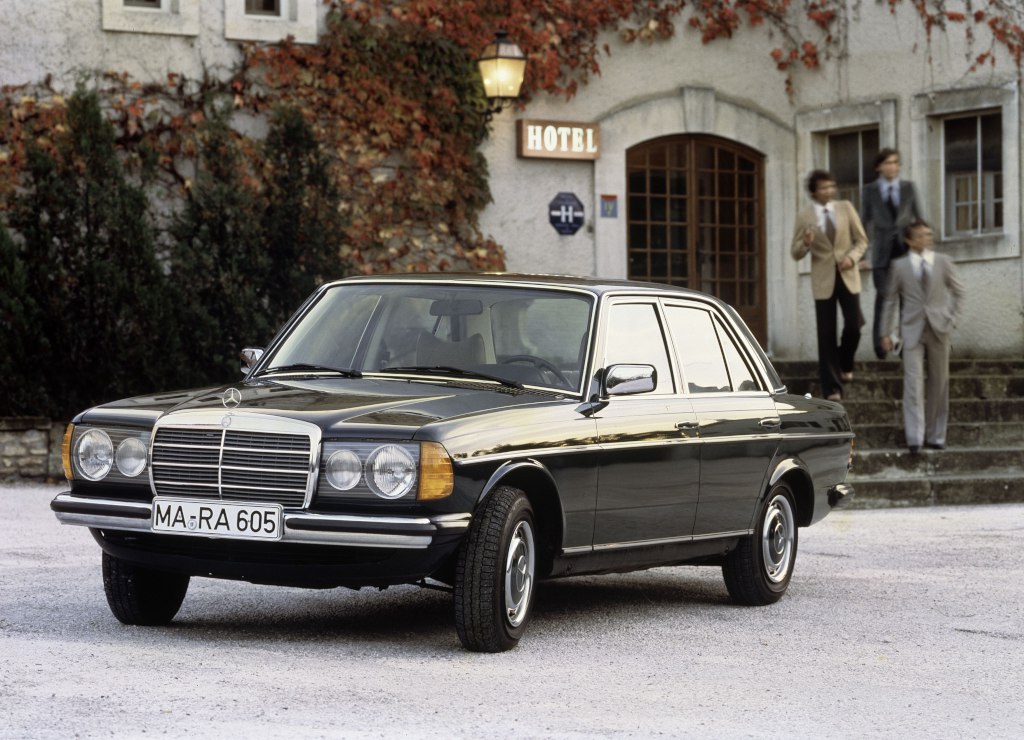
Mercedes W 123 model series, launched in January 1976.
Electronics was on the rise. It allowed the operation of old inventions that were expensive and slow in the mechanical form and thus more or less conditionally usable or even pointless. New trends have come, mainly ecology and safety, which have become essential forces in the vehicle development.
Car design was reborn and the concept of personalization has become the part of car dealers everyday vocabulary.
The car increasingly alienates from the human
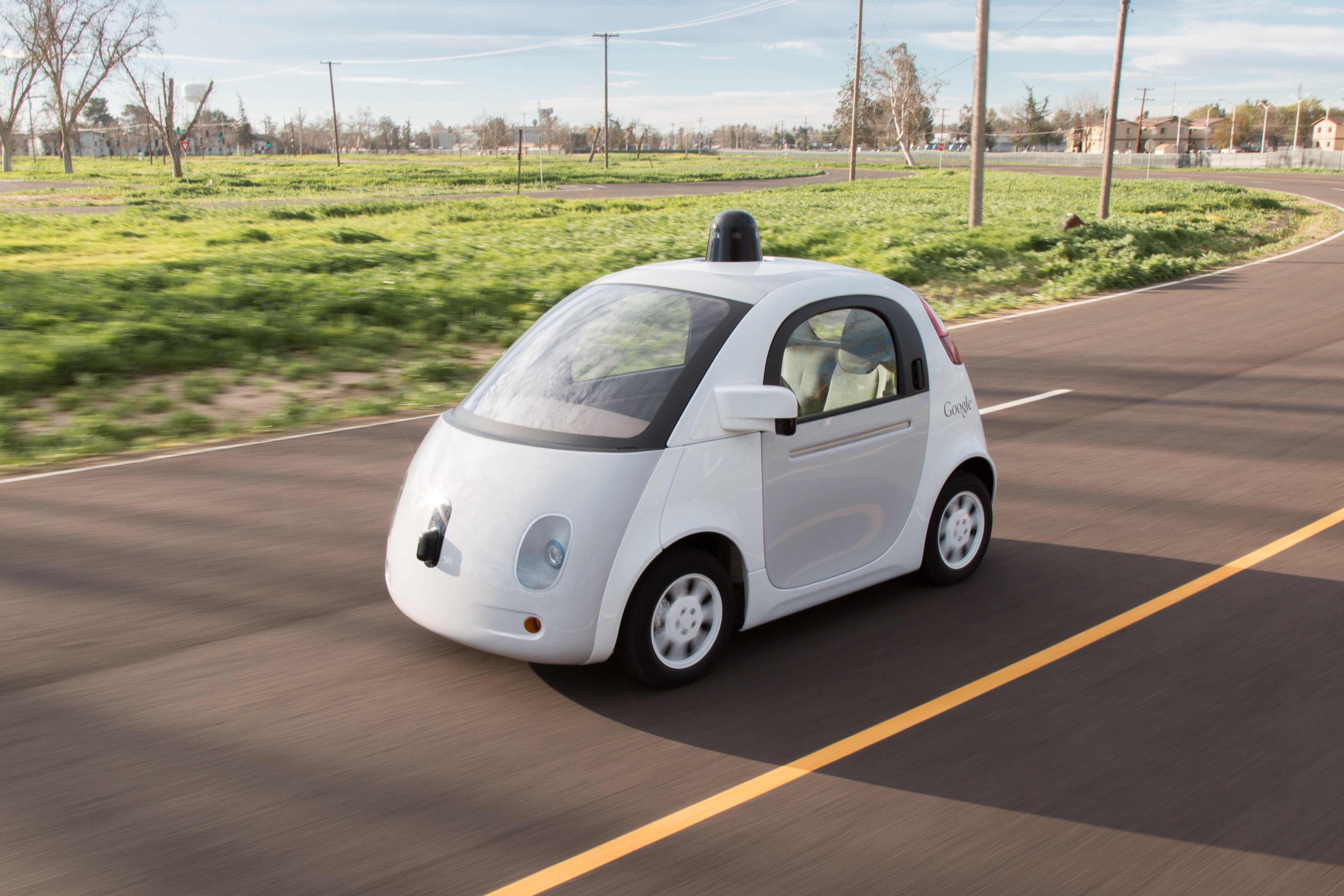
The car will become a self-driving cabin – bye bye romance. Image source: Google
Today, the car became a feat of engineering, beautiful inside and outside, and especially electronic toy.
Crowded roads and strict traffic regulations are reducing the driving pleasure to the lowest level in the whole period of the car. And tomorrow, if the development will go forward as shown, the car will become a virtual living room that drives by itself. Bye bye romance.
Image credit: Jaguar, Mercedes, Google, Sustainnovate
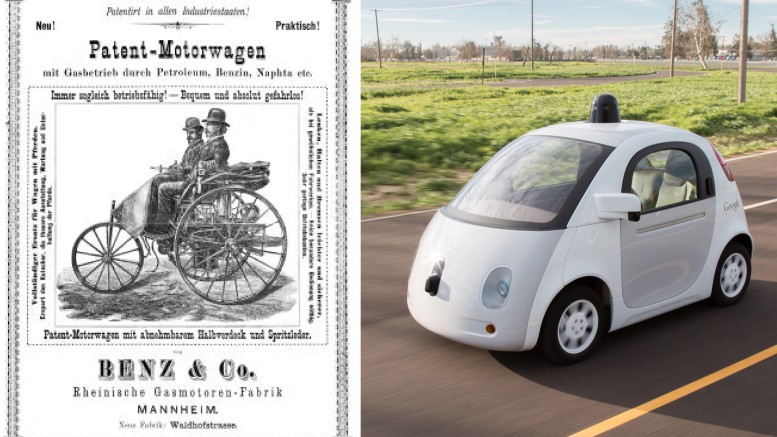

Be the first to comment on "130 years of Auto Evolution – from blacksmith product to self-driving wonder"